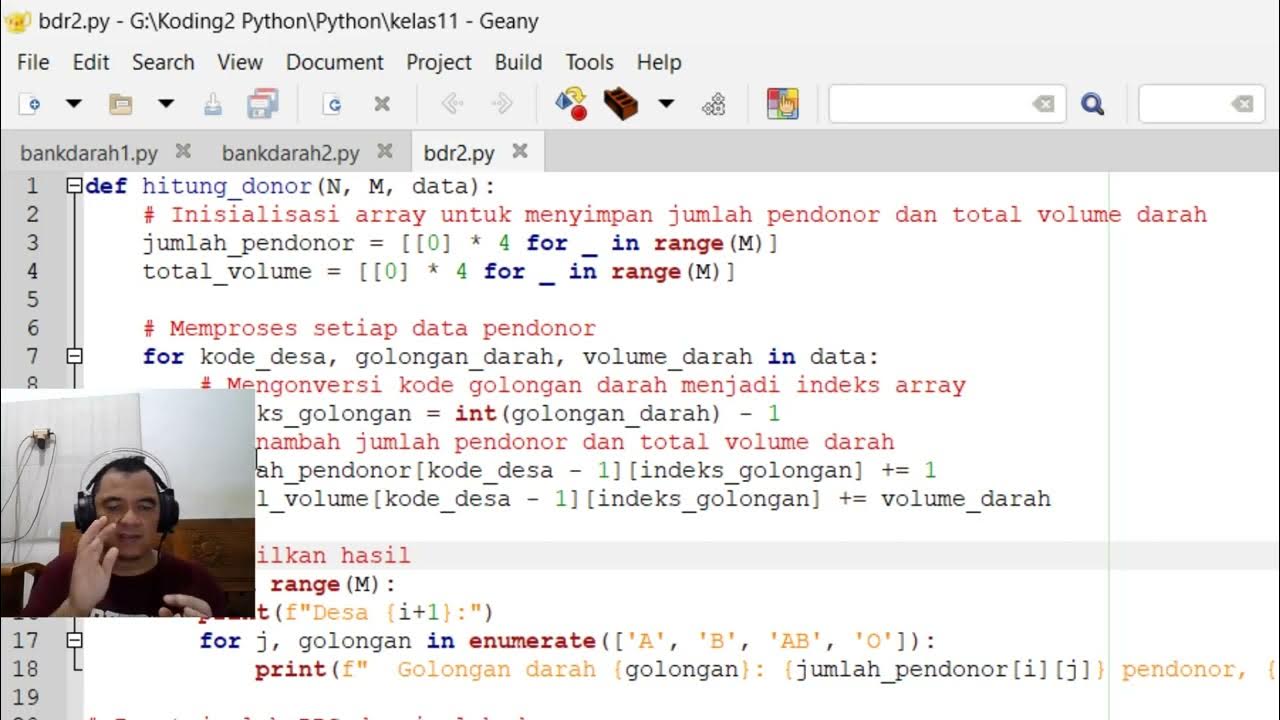Global Blood Fund - Video 2 - UNDERSTANDING DONORS AND DONATION - Donor Recruiter Education
Summary
TLDRThis educational module delves into the complexities of donor management within blood establishments, emphasizing the need for structured strategies to engage and retain donors. It explores theoretical models to understand donation behavior, discusses the ethical considerations laid out by ISBT, and highlights the importance of donor autonomy, dignity, and non-maleficence. The module also covers donor segmentation based on demographics, behaviors, and attitudes, providing insights into donor motivations and how to tailor recruitment and retention efforts effectively.
Takeaways
- 😀 The module focuses on donor management and the importance of understanding donor behavior to develop effective recruitment and retention strategies.
- 👨👩👧👦 Donors can be segmented based on demographics, behaviors, and attitudes, which helps in tailoring strategies for different groups such as young or female donors.
- 🏥 The ISBT Code of Ethics provides guidance on donor autonomy, dignity, and non-maleficence, emphasizing the ethical treatment of donors.
- 🤝 Blood services should treat donors like customers to secure initial participation and encourage repeat donations, focusing on creating a positive donor experience.
- 🌐 Geographic location, education, and income are demographic factors that can influence a person's likelihood to become and remain a donor.
- 🔄 The donation process involves recruitment, donor base maintenance, retention, and eventual deferral, with each stage requiring different strategies for donor management.
- 📊 Understanding donor types and behaviors is crucial for suggesting strategies and actions that positively impact specific donor groups.
- 📈 Demographic characteristics can be used to segment the donor base, with factors like age and lifestyle influencing donation patterns and potential lifetime value.
- 📋 Attitudinal segmentation involves dividing donors into groups based on their attitudes towards donation, which can inform targeted marketing approaches.
- 🌐 Social marketing campaigns and social psychological theories are used to influence donor behavior, considering factors like social norms, cognitive dissonance, and self-efficacy.
Q & A
What is the primary challenge for blood establishments in securing blood supplies?
-Blood establishments face the challenge of persuading thousands or even millions of individuals to undergo a procedure that may have a cost in terms of time, discomfort, or well-being, without the incentive of monetary exchange, which is not recognized as rational behavior by economists.
How does the ISBT Code of Ethics define a donor?
-The ISBT Code of Ethics defines a donor as any person who voluntarily gives blood or blood components. However, in the context of resource-poor countries, this definition may need to be expanded to include family replacement donors.
What are the two broad ethical principles cited by ISBT in relation to donors?
-The two broad ethical principles cited by ISBT in relation to donors are autonomy and dignity, and non-maleficence, which refers to doing no unnecessary or unreasonable harm.
Why is it important to consider donors as customers in the context of blood donation?
-Considering donors as customers is important to secure initial participation and then repeat donation. Understanding why they choose to donate and how to encourage this behavior is crucial for the sustainability of blood supplies.
What is the significance of the 'Thank the Donor' tool used by many blood centers in the United States?
-The 'Thank the Donor' tool enables patients or their loved ones to send anonymous messages to the donor of the actual unit or units used to treat them, fostering a sense of connection and gratitude, which can be a motivational factor for donors.
How does demographic segmentation of donors help in blood service management?
-Demographic segmentation helps in understanding and targeting specific groups of donors based on shared characteristics such as age, geographic location, education, and income levels, which can influence their propensity to donate and stay as donors.
What are the three distinct donor categories identified in the script?
-The three distinct donor categories identified are voluntary non-remunerated, family replacement, and paid donors.
Why is it important to convert family replacement donors to regular volunteer donors?
-Converting family replacement donors to regular volunteer donors is important because regular repeat donors are far safer than both first-time voluntary and family replacement donors, ensuring a safer and more reliable blood supply.
What is the significance of understanding the donation process in relation to donor behavior?
-Understanding the donation process is significant as it helps in recognizing how donors differ from each other and evolve over time in their donation careers. It also provides the context in which donors exhibit behaviors, which is crucial for developing effective recruitment and retention strategies.
How does the concept of 'recency and frequency' contribute to understanding donor behavior?
-The concept of 'recency and frequency' contributes to understanding donor behavior by considering the time since the last donation and the total number of donations made. This helps in predicting the likelihood of a donor returning to donate again and directs targeted communications to relevant donor segments.
What are the four attitudinal segments of donors identified by a major blood center in the United States?
-The four attitudinal segments of donors identified are 'participants', 'efficients', 'reluctants', and 'resistant'. Each segment has distinct attitudes and preferences towards blood donation, which inform tailored marketing and recruitment strategies.
Outlines

This section is available to paid users only. Please upgrade to access this part.
Upgrade NowMindmap

This section is available to paid users only. Please upgrade to access this part.
Upgrade NowKeywords

This section is available to paid users only. Please upgrade to access this part.
Upgrade NowHighlights

This section is available to paid users only. Please upgrade to access this part.
Upgrade NowTranscripts

This section is available to paid users only. Please upgrade to access this part.
Upgrade NowBrowse More Related Video
5.0 / 5 (0 votes)





